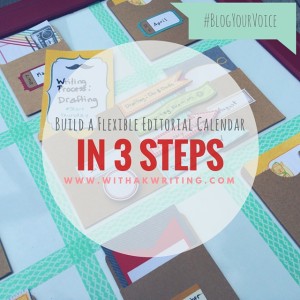
Writing Resistance: The War of Art, or an Emotional Tiger Hunt?
As a writer with 20 years of experience, I’m no stranger to Writing Resistance.
For years, I took the advice to push through writing resistance using this magical thing, called, “Will Power” TM. That nearly killed me, for real. Look – it worked for a while, but it truly and actually damaged my brain and body.
My brain was using the wrong fuel for the job. So the engine seized and caused some serious damage to my mental and physical health.

Adrenaline and fear pushed me through things that required dopamine and coping strategies. Deadlines and a searing pressure to always – no matter what – DO THE THING.
I had no idea that people just had motivation to do things. I thought everyone had to be living with the paralyzing-yet-energizing fear of failure and destruction in order to do things. Like…any things. I needed that feeling to do laundry or study for exams or pass in a paper for publication or brush my teeth.
Turns out, that’s a big fat symptom of undiagnosed ADHD, and it really and truly almost killed me. More on that some other time though.
My doctor diagnosed me with ADHD when I was 38 years old. That means I was living with maladaptive coping strategies for a minute, and I’m not a rarity in that.
Unfortunately for women, this is the average age of diagnosis. Even though ADHD a life-long thing. The theory around why is that we’re not as likely to be disruptive outwardly as our male counterparts.
So we’re left to stare out windows, chew our nails, and internalize all kinds of shame for the way our brains work instead of getting diagnosed and receiving treatment at the average age of 6 that the average boy does. That’s 30-ish years difference!
But again – more on that some other time. Let’s talk about writing resistance and Brain- Tigers today.
With this diagnosis, I realized that my difficult relationship with motivation was more about dragons and tigers and emotional bravery than it was about will power.
Now, as with any kind of Neuro-divurgence, ADHD and its symptoms exist on a spectrum. Some people struggle harder in areas I don’t – and others have the opposite display.
Something I’ve discovered is that many of my ADHD coping strategies are wildly helpful for other types of brains too! Particularly if those brains are struggling with a seemingly impossible task and need some gentle structure to get it done.
So let’s start by talking about trauma response: you may know it as Fight, Flight or Freeze.
This is what our brains do to prepare us for battle, or run away from something we can’t beat. Or just freeze solid if you have no hope to either win or get away. Yikes!
In response to acute stress, the body’s sympathetic nervous system is activated by the sudden release of hormones. The sympathetic nervous system then stimulates the adrenal glands, triggering the release of catecholamines (including adrenaline and noradrenaline).
(Cherry and Gans, MD )
ADHD brains have a different way of dealing with emotions and information.
And the way we deal with the trauma response is…not always helpful. ADHD brains are famously considered distracted or hyperactive – but I feel like the better descriptor for our minds is unregulated.
My brain doesn’t regulate either the perception of danger or the response to it in a consistent way, and it shows up a lot when I am facing a task with multiple steps or any kind of uncertainty. (King et al.)
And most tasks feel uncertain to me, because my brain is also not great at holding information at the ready for me, like the steps of a plan or a list of ideas or tasks.
Instead of “write this thing” being treated like a series of manageable tasks, my brain sees a frightening and mysterious job and goes into the stress response.

I am, in effect, being told by my brain and body to run as fast as I can and also fight with all of my might and also don’t move a muscle.
Because TIGERS! Everything is a tiger, and nothing is a tiger, and you can’t possibly survive, so go to sleep, and also stay alert, and also find a distraction. Or else? Get eaten by a tiger.
So this warring set of messages and impulses make every big task (or tiny task that sets off the trauma response for…reasons) actually terrifying and paralyzing, and oh so exhausting.
And then, as I cower in my blanket burrito of relative safety, scrolling the Instagrams and the TikTiks, I happen upon some kind of super helpful and not at all re-traumatizing inspirational quote about Beyoncé having the same number of hours in her day as I have in mine.
And that’s just – I mean – that’s great, right? We all need a little kick in the ribs when we’re already down.
I treasure that feeling of utter and complete emotional exhaustion after losing a Tiger-Fight with my own frontal cortex – slathered with a healthy extra dose of shame and blame. LOVE that for me.
But how do we get to the trauma-response at all? That seems like an over-reaction – even for my dramatic brain.
So the reason that my brain immediately thinks that a writing project is tigers has to do with Executive Function…and how mine is not so functional.
ADHD isn’t the only thing that will mess with one’s executive function, so if you are over-tired, on some medical treatments, experiencing the longterm effects of traumatic brain injury or trauma – or anything in a myriad of other stressors (Experiencing a global pandemic).
This could be your life too. Hooray!
Executive function is the whole set of tasks and skills our minds use in order to help us function in our daily lives.
Things like:
- Maintaining a working memory,
- Planning out tasks,
- Regulating impulse control,
- Feeling and judging the passage of time,
- And even processing and regulating emotions and appetite.
My brain doesn’t innately break a large task into smaller pieces and then dole out the dopamine I need to start each of them.
I can’t even truly visualize the process or end result of a project. So, I have to do a lot of parsing and breaking things down, ahead of time or it all feels WILDLY overwhelming and impossible.
Kind of like it’s a tiger, waiting to eat me. And I’m wandering in the woods, with no map or flashlight or tiger repellent.
“Definitely a tiger,” says my brain, “If I can’t see the whole walk in the woods clearly? It’s definitely a whole forest full of hungry tigers.”
Might as well plan for the worst and flood my system with paralysis and anxiety and no idea of where to start to solve it…that’ll help, right?
So the best thing for me to do, in order to make it clear to my brain that there are no tigers in the woods, is to plan out those steps with a clear and detailed map.

The steps sometimes have to be so small that I need to shine the light directly onto my feet each step to see – while still holding the checkpoint ahead in my mind.
This is why I’m so obsessed With the idea of the best possible Writing Process in general, and the need for a clear outline for every project, in particular.
It’s my tiger repellent! It’s my flashlight in the dark, and my emotional bravery booster.
It’s safe to come out, Brain. No tigers here.
Which makes sense! Because my brain can’t hold that map for me, so I need to create one for myself to avoid getting lost.
And that map needs to be consistent and clear and made of bite-sized pieces, but with a clear direction to follow toward the final destination.
I also need rules. I hate them. But I need them in everything I do, or I’ll careen off into whatever wild side-quests I find in the forest.
Sometimes that’s great! And exciting, and totally fun for everyone involved, but usually it’s not. And almost always, the original destination gets forgotten until it’s already a half hour past the time I was supposed to get there.
I need rules to be unwavering & clearcut. I WILL be mad at them and hateful about following them, but I still need em. My brain is an unruly teenager. What can I say. Click To TweetFor instance, here are some rules you can follow, if you’re feeling lost in the woods of Writing Resistance too:

Rule 1: While you’re lighting up the path directly in front of your feet, don’t let your hyper-curious mind focus too hard on that adorable mushroom on the path, instead of the path itself.
Rule 2: Take mandated rest breaks. Do NOT try to do the whole trip in one wild and frenzied sprint.
Rule 3: Show up at the same time and in the same way, once you know what works best for you.
Rule 4: Bring a friend. Knowing that you aren’t alone in the process makes it far less frightening – even if your friend is somewhere else, working on something else. Just knowing she’s out there helps.
The key to figuring out the rules you need to follow, is to see where you stumble the most. And then make a rule that keeps you from going there.
Above all, learn to recognize when and how your own brain-tigers jump out at you. You could be made frightened by research, or by moving from your notebook to your keyboard.
Your fears and resistance don’t need to make sense for them to cause you to feel just plain uncomfy with the idea of writing. If you can avoid triggering those feelings of flight or freeze though, you’ll be more likely to live to fight another day.
Take that, tigers!
Where do your writing resistance tigers hide? And how do you fight them off? I’m always thrilled to hear about other writers’ tactics to avoid the dreaded block.
Thanks, as always, for giving me space in your crowded and busy life! I appreciate your time and attention a lot, and hope always that I’ve given you something valuable, in return.

Sign up for #30DaysWithaK, a free challenge that will help you to build a comfortable and effective writing practice through daily free-writing. We explore everything from claiming a writing space you love – to facing the Writing Resistance you dread – and many things between.
- King, Jean A., et al. “Attention-Deficit Hyperactivity Disorder and the Stress Response.” Biological Psychiatry, Elsevier BV, July 1998, pp. 72–74. Crossref, doi:10.1016/s0006-3223(97)00507-6.
- Cherry, Kendra, and Steven Gans, MD . “How the Fight-or-Flight Response Works.” Verywell Mind, 2019, www.verywellmind.com.
- Cherry, Kendra, and Steven Gans, MD . “How the Fight-or-Flight Response Works.” Verywell Mind, 2019, www.verywellmind.com.
- King, Jean A., et al. “Attention-Deficit Hyperactivity Disorder and the Stress Response.” Biological Psychiatry, Elsevier BV, July 1998, pp. 72–74. Crossref, doi:10.1016/s0006-3223(97)00507-6.
You mad? Excited? Have a perspective to share? Please do!
3 Comments
Leave a Comment
Want to read more? Check out these recent articles.
How to Build a Flexible Editorial Calendar in 3 Steps
Your Editorial Calendar doesn’t need to feel like a set of creativity-handcuffs. It should feel like a comforting & inspiring guideline. One that allows you to be more creative. Not stifled & uninspired. I’m an idea machine. I’ve always been a “creative person,” whatever that means, & I operated under the assumption for a long…
Why I love my Broken Voice…Finally
If you’ve been reading my blog for any time at all, you’ve heard me talk about these 2 things at least eleven times: Embracing your Voice & Finding Your Great Big Why. In my experience, these 2 things are really important Pre-Prewriting steps any writer should take in order to start really focusing in on her message & sharing it confidently.…
My Students taught me this key Lesson about Blogging & Business
Striving for perfection will not make your message stronger. In fact, it is pretty much guaranteed to keep your message bottled up, nice and tight, away from your readers. I understand why you are doing it; don’t get me wrong! I totally understand that need to just wait one more minute before sharing your voice because it’s not quite…
Series and Segments: 2 Steps to Begin a Great Editorial Calendar
Plan & Commit to an Editorial Calendar for your whole year? That can feel a little overwhelming, right? In fact, it’s downright paralyzing. I’m a bit of a commitment-phobe, so it’s really hard for me to commit to what I will be writing about EVERY week for the next year. That’s too constricting! And overwhelming…and scary. And it’s not…
Your Blog Editorial Calendar can Actually Make you Happy
Your Blog’s Editorial Calendar can change your blog from some scattered musings…to a marketing & community-building powerhouse. But its real strength lies in how it will affect you! I have the tendency to go on tangents as a storyteller. *pause for laughs* I know! It’s something that you’ve probably noticed already, but you don’t even know.…
5 Steps to Take Your Blog Photos from Shoot to Blog…times 2
There are some stunning blog photos online. In fact, professional-level images are becoming the standard for blog photos. Seriously. With the fancy DSLR cameras out there, and the ability we have to learn almost any skill we want from our desktop computer (or smartphone), the online world is getting pretty darn…well…pretty these days. The problem is…





Kris
This article is such a blessing to my brain tigers. I was unable to write because of the resistance and thought something was wrong with me.
Just excited to implement the rules mentioned in the article.
To answer your question, my resistance appears at the initial stages of writing. I just can’t seem to start and pressure does the job of completing – but not for my creative soul as there isn’t much time left to explore that.
How do I fight them? Pressure and plenty of crying. This is something I want to change and glad to come across your article.
[…] slipping, tumbling and pouring through your fingertips and into the world, without even a touch of resistance or […]
[…] folx. The difficulty of living day to day life makes writing hard enough sometimes. But creative resistance, or writers’ block (if that were a thing: hint- it’s not), make it nearly impossible to put […]